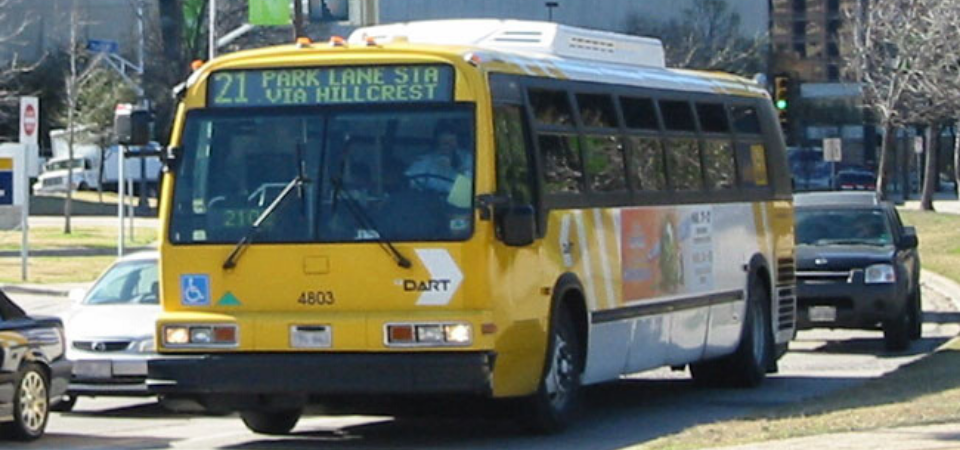Riding the bus in the Dallas area can be immensely challenging, but it is a daily reality for many in our community. Arriving at work or school can take hours when you factor traveling to your departing station, waiting on infrequent buses, zigzagging across town, transferring to another bus or train, and finally reaching your destination.
Dallas Area Rapid Transit (DART) bus ridership has been declining for decades because of the route network’s inefficient design. Everyone has better things to do than spend time navigating this treacherous system, which has led to a greater dependence on automobile use that further clogs our highways and roads instead of alleviating them – but we can fix this.
DART recently commissioned a study and is working on a plan to redesign its entire bus route network and seeking input on better connecting people and the places they want to go.
Two issues complicate an overhaul: ridership and coverage. A system optimized for high ridership requires a high frequency of service. For example, if you are catching a bus in New York City, you do not usually have to look at a schedule. You simply go to the bus stop and if you miss one, the next one is not far behind. You can depend on New York’s efficient bus system because it has a high ridership and a massive fleet of buses to meet the demand. Since DART buses have neither the ridership nor buses to achieve high frequency, officials must focus on efficiently connecting the greatest number of riders to the most commonly sought destinations in the Metroplex.
An alternative approach would maximize the coverage of bus routes to incorporate as many streets and neighborhoods as possible. While this concept would reach all corners of the city, it would also reduce the ability for the system to serve residents and workers efficiently because routes are too spread out and buses cannot run more frequently on key connector roads. This is the failed policy in place today and it has resulted in an unreliable system with falling ridership that is difficult to navigate and takes much too long to get people where they are going.
A system redesign must result in an equitable bus network that enhances transit access to all parts of the DART service area. A major goal should be to connect riders to their workplaces in as efficient a manner as possible. Access to healthcare, education, entertainment, and shopping should also be optimized.
This is an important time for the future of transit in our region. Other DART projects, such as the D2 subway line and the Cotton Belt, are facing potential funding challenges due to COVID-19’s impact on sales tax and fare revenues, which only heightens the importance of pursuing additional improvements to our transportation network. While the effects of the pandemic on our transit system and region remains to be seen, it is as essential as ever to look forward and plan for a bright future.
The Real Estate Council will continue to monitor DART projects as part of its Public Policy Committee. Please feel free to reach out to me or members of the TREC team to engage on this important topic.
